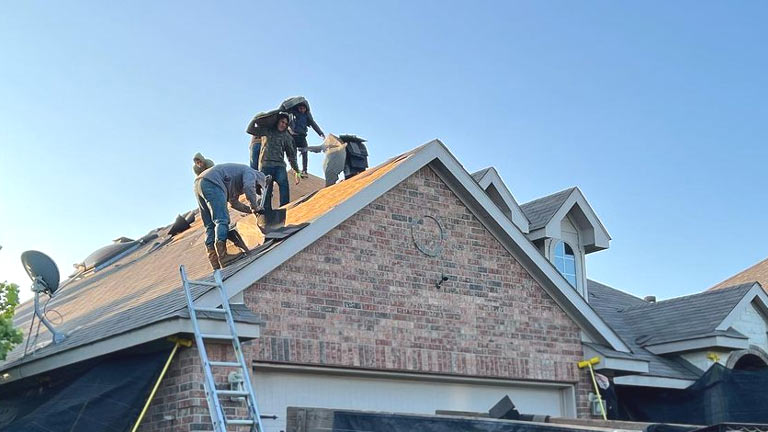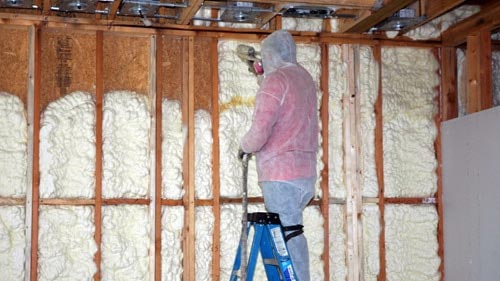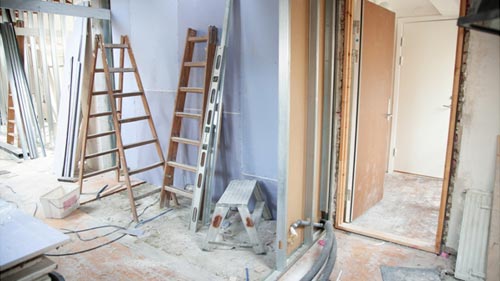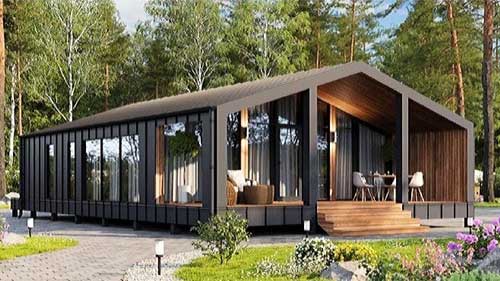
Is your home roof showing signs of wear and tear? Postponing necessary repairs or a full replacement can endanger your home and family in ways you might not realize. Leaks leading to water damage could result in toxic mold growth and the decay of rafters. If left unattended, this structural weakness could make your home more vulnerable to collapsing during heavy storms.
Using outdated materials like asbestos shingles poses health risks as they deteriorate. Moreover, inefficient and worn-out roofs drive up energy bills by wasting heating and cooling. Repair costs multiply significantly the longer you delay addressing the issues. To avoid these risks, schedule a roof replacement promptly. Investing in a new and durable roof now safeguards your most valuable asset and provides your family with peace of mind. Take action before the next storm hits unexpectedly.
We’ll outline seven significant risks you take by prolonging the necessary roof replacement. From escalating repair expenses to decreasing home value, ignoring your roof’s needs can have serious consequences.
Roof Deterioration Accelerates
As obvious as it may sound, not a lot of homeowners tend to pay attention to this aspect. Delaying roof replacement speeds up the deterioration of materials. Problems like leaks, curled or cracked shingles, and failing tar sealant strips worsen rapidly if not addressed. What may appear as minor issues today can turn into significant defects over time. The longer replacement is postponed, the more water can seep through small cracks and openings during rainfall. This moisture infiltrates beneath, leading to rapid decay of the vulnerable wood decking and roof structure. Rot spreads fast, compromising structural stability.
Seek professionals in your area to resolve this issue. The best roofing company provides comprehensive services while considering your budget. Look for highly-rated services, review quotes, and seek recommendations. Don’t compromise on addressing this matter promptly. Take proactive steps to avoid costly repairs due to decay later on.
Interior Water Damage
An aging roof with leaks can cause water to seep into the home, resulting in damage. Stained ceilings, peeling paint, warped walls or floors, and mold growth often occur due to these leaks. Water damage is gradual and may begin by weakening insulation or framing if not dealt with promptly. Although fixing roof leaks temporarily is necessary, it only addresses part of the issue.
Specifically, an old leaky roof will cause interior water damage if not replaced. Water infiltration weakens the framing, compromising the structure. Addressing occasional leaks one by one won’t solve the underlying problem of a failing roof system. Only a complete roof replacement can stop entry points and prevent ongoing water seepage. Don’t let years of neglect result in extensive indoor repairs. Stop the damage by timely replacing the roof.
Decline in Property Value
An aging, weather-beaten roof diminishes your home’s visual appeal and resale value. When you’re ready to sell, potential buyers will quickly spot a deteriorating, patched-up roof during their viewing. This perception leads them to believe the home is poorly maintained, raising worries about potential hidden problems. Buyers may offer lower prices, factoring in the expected cost of replacing the worn roof. Stay proactive by investing in a complete roof replacement before putting your home on the market. It indicates to buyers that the house has been well-maintained and won’t need major repairs or replacements.
Increased Insurance Premiums
An old, deteriorating roof might be seen as a risk by insurance providers, leading them to raise your premiums. They anticipate potential claims due to the roof’s condition. Even without past roof-related claims, insurers understand that an old roof is likely to cause problems. Being proactive by replacing your worn-out roof, even if it’s still functional, shows that your home is well-maintained and less likely to encounter issues. This proactive step can prevent sudden increases in premiums. A new roof communicates to insurers that your home is responsibly looked after, helping to maintain stable insurance costs.
Risk of Serious Injury
As a roof surpasses its typical lifespan, it becomes increasingly susceptible to sudden hazardous failures and collapses. Stormy weather, like heavy rain, wind, and hail, stresses an aging roof’s materials, compromising its structural integrity. Portions of shingles or flashing might detach unexpectedly during storms. Additionally, large tree branches can more easily puncture fragile areas of an old roof.
Moreover, moisture damage often weakens the framing and decking of an older roof. These rotted sections pose dangers and can lead to severe accidents for anyone conducting roof repairs or inspections if they rely on them for support. To safeguard your home and prevent potential liability issues, consider replacing your roof before these risks become inevitable. A new roof ensures durable strength and resistance against tornadoes, lightning, and other accidents.
Increased Cooling Costs
A deteriorating roofing system causes higher summer energy bills due to increased heat gain and air seepage. Cracks and worn-out structures lead to excessive heat transfer, making the air conditioner work harder. This inefficiency results in soaring energy bills as the system struggles to maintain indoor temperatures.
Old roofs lack modern reflective coatings that aid efficient cooling. Investing in a new, leak-proof roof with improved insulation and weather resistance addresses this issue. A properly installed new roof creates a strong barrier. It keeps your home cooler and maintains reasonable energy bills year-round by enhancing efficiency.
Compromised Home Safety Standards
Continuing to postpone necessary roof replacement jeopardizes your home’s compliance with safety standards. Building codes and safety regulations are designed to ensure structural integrity and safety for occupants. A deteriorating roof might fail to meet these standards, putting your home at risk of non-compliance.




